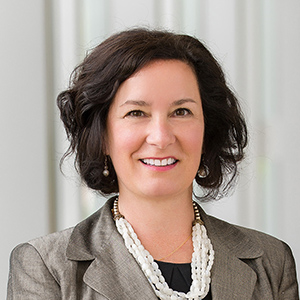
Good morning everyone ~ Cante Wasteya Tima Hiyu Wo
In the Lakota language of my relatives—Come in with a good heart!
Welcome and thank you for joining us today.
I am Patrice Kunesh, co-director of the Center for Indian Country Development, the Minneapolis Federal Reserve Bank’s new center of excellence. Launched last summer, the Center intends to focus the Bank’s considerable resources research, outreach, and community development to support tribes in attaining their economic development goals.
One of the most pressing and needed economic opportunities in Indian Country is homeownership. I personally have witnessed and experienced this dire need and painful struggle, in my own family on the Standing Rock Reservation and throughout Indian Country. I also have witnessed the transformative impacts of owning a home of providing a secure and safe place for the family, of restoring cultural connections to the land, and of creating a sense of wealth and wellbeing.
And I know quite well the myriad challenges to funding and administering successful homeownership program.
Many people find economic growth and opportunity to be an ambiguous goal that it cannot be broadly shared or sustainable. But I believe we do know how to make them grow our real challenge is to make them grow in an inclusive and sustainable way.
That is why we are here today to discuss on Mortgage Lending in Indian Country: to celebrate 20 years of foundational investments and lay the framework for Future Pathways to Homeownership.
With this convening, the Center for Indian Country Development launches its three-year Native Homeownership initiative, where we will examine the multimodal networks of markets, financing, processes, and delivery of homeownership programs, support the best strategies to ensure access to capital and scale a sustainable housing market in Indian Country, and encourage inclusive economic growth and empowerment.
Some of you have asked, why should I attend this particular event? We heard the timing was inconvenient – to be sure, we’re all very busy and terribly overcommitted.
But when the perfect team comes together around an issue of vital importance, there’s no time like now to seize the opportunity to put our heads together and lean in hard.
Our dream team of homeownership advocates are: Steve Barbier of NeighborWorks America, Jim Nordland, Alaska State Director for USDA Rural Development, Craig Nolte, my colleague at the San Francisco Federal Reserve Bank, Bob Gauthier, a legend in the field of homeownership in Indian Country, Joanna Donohoe, a principal in the consulting firm Seven Sisters who’s deeply involved in the South Dakota Native Homeownership Coalition, and Diana Holshue, the extraordinary Outreach director at the Helena Branch of the Minneapolis Fed.
We also heard that this was a “tired” issue and already had been thoroughly covered. It is true that housing in Indian Country has been front and center of many meetings – at the annual NAIHC conference in May and in regional meetings such as the recent HUD Great Plains meeting in Bismarck. Those conversations tend to focus on tribal programs that provide subsidized rental housing.
This convening is very different. For the next day and a half, we will examine Indian Country through the lens of homeownership with the goals of capitalizing on community assets, improving access to mortgage capital, and building stronger economies.
Finally, we heard, why me? You have been invited to participate in this inaugural convening of the Center for Indian Country Development because each of you is a Solution Finder.
A Solution Finder believes that the most powerful ideas often come from the most unexpected places – the hidden genius of your colleagues and the collective brilliance that results from collaboration.
For quite some time, the Federal Reserve Bank has seen the incredible power of convenings to create shared dialogue, spur debates about pathways to impact, and catalyze groundbreaking ideas. Learning from this practice, I seized the opportunity to harness the collective intelligence of thought leaders and change agents such as each of you, to join us in the quest for homeownership in Indian Country.
Why this is important? Few of Indian Country’s financial and institutional challenges today are new. There is nothing new about persistent poverty or woefully inadequate funding to support essential services such as housing, education, healthcare, and public safety.
What is new is our ability to see and understand how the problems connect. We have become more sophisticated in the use of data and more willing to tackle problems systematically and holistically.
We also will enter the conversation asking different questions – questions about using tribal self-determination to create opportunities for a more inclusive and expansive reservation economy, about how we channel economic growth into a market driven by demand and supply, and how we scale that market through process efficiencies and fluid capital. I want to use these data and systems technologies to scale new ideas and tackle old problems.
This work cannot be done in isolation and it may take a few years to accomplish. Thus, we need a powerful collective effort to make headway against the complex challenges of establishing a stable, consistent housing market for our native people.
So on behalf of the planning team, thank you for making the commitment to being here today and to supporting this incredibly important work.


